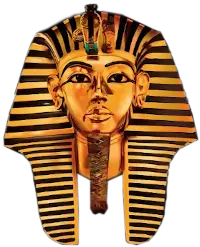
CHAPTER VIII:
The Memphite Theology is the Basis of all Important Doctrines in Greek Philosophy.
History and Description:
The Memphite Theology is an inscription on a stone, now kept in the British Museum. It contains the theological, cosmological and philosophical views of the Egyptians. It has already been referred to in my treatment of Plato's doctrines; but it must be repeated here to show its full importance as the basis of the entire field of Greek philosophy. It is dated 700 B.C., and bears the name of an Egyptian Pharaoh who stated that he had copied an inscription of his ancestors. This statement is verified by language and typical arrangement of the text, and therefore assigns the original date of the Memphite Theology to a very early period of Egyptian history, i.e., the time when the first Dynasties had made their new capital at Memphis: the city of the God Ptah, i.e., between 4000 and 3500 B.C. (Intellectual Adventure of Man by Frankfort, p. 55).
The Text:
This consists of three supplementary parts, each of which will be treated separately: both as regards its teachings and the identity in Greek philosophy.
Part I presents the Gods of Chaos. Part II presents the Gods of Order and arrangement in creation; and Part III presents the Primate of the Gods, or the God of Gods, through whose (Logos) creation was accomplished.
In Part I pre-creation or chaos is represented as follows:--
A. Text of Part I:
The Primate of the Gods Ptah, conceived in his heart, everything that exists and by His utterance created them all. He
Topics
Greek Philospohy is Stolen Egyptian Philosophy
The Memphite Theology is the Basis of all Important Doctrines of Greek Philosophy
Greek Philosophy was Alien to the Greeks
Greek Philosophy was the offspring of the Egyptian Mystery System
The Egyptians Educated the Greeks
The Curriculum of the Egyptian Mystery System
The Pre-Socratic Philosophers and the teaching Ascribed to them
The Athenian Philosophers
1. Socrates
2. Plato
3. Aristotle